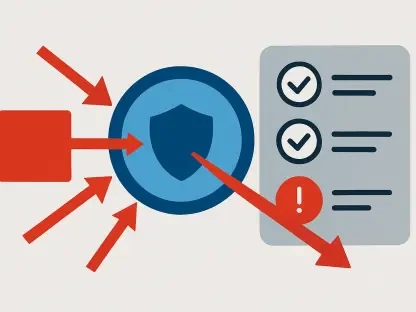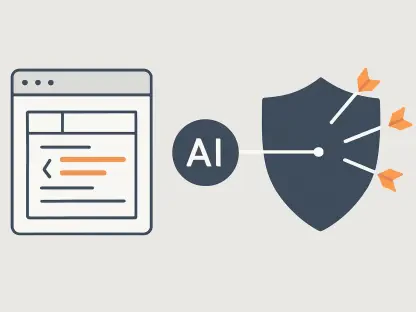In the modern digital age, safeguarding your essential data through effective backup solutions has become indispensable. Whether you’re an individual user or part of a larger organization, using the best backup software can ensure that your valuable data on Windows 10 is secure and retrievable in case of accidental loss, corruption, or cyber threats. Understanding the different facets of creating a robust backup strategy can save you time, stress, and money in the long run. This article will guide you through the best practices, starting from understanding existing backup policies to implementing data security measures.
1. Comprehend Existing Backup Policies
Understanding the backup policies currently in place within your office or department is a crucial first step. Different organizations or branches may have their own set of policies that dictate how data backups should be carried out. Therefore, it’s essential to consult with your IT staff to comprehend these specific guidelines and procedures. Often, these policies are part of a broader data management plan designed to ensure data integrity and security across the organization. By having a clear understanding of these policies, you can ensure that your backup strategy is compliant with your organization’s standards.
Moreover, the backup policies might differ significantly from one department to another. While some areas may have stringent backup protocols, others might employ a more relaxed approach. For instance, highly sensitive data in a financial department may require daily backups, whereas a creative department might back up their data weekly. Identifying these variations and discussing them with your IT team will help you align your backup procedures with the overall data management objectives of your branch and adopt the best practices as per the policy requirements.
2. Establish or Revise Backup Policies
If your organization lacks a defined backup policy, it is imperative to establish one promptly. Creating a clear and detailed backup policy is the backbone of a secure data management framework. The first step in this process is to allocate responsibility for performing backups, ensuring that a particular individual or team is accountable for this crucial task. Once the responsibility is designated, the next step is determining where the backup data will be stored. This might involve utilizing a dedicated server, cloud storage, or external hard drives, depending on what aligns best with your organizational needs.
A critical part of the backup policy is the process of accessing these files. Defining how and who can access the backup data ensures that only authorized personnel can retrieve this information. Another key consideration is the frequency of backups. Determining how often backups should be performed depends on the nature of the data and its importance. Some may need daily backups, while others could suffice with weekly or even monthly backups. It’s also vital to outline the policies governing the relocation of data or changes in file formats, ensuring that the data remains usable and intact whenever accessed or transferred.
3. Automate Backup Processes
While manually backing up individual files is possible, it is far from efficient, especially when dealing with large volumes of data. Automating your backup process ensures that no files are overlooked, and it also promotes regularity and reliability. Automated backups can be scheduled to run at specific intervals, making them a more consistent and effortless solution for data protection. Regularly scheduled backups not only minimize the risk of data loss but also provide peace of mind, knowing that your data is being backed up systematically.
Including metadata in your backup processes is equally important. Metadata provides additional context to your data, such as the time of creation, creator’s information, and other relevant details that facilitate data management and retrieval. By automating the inclusion of metadata in your backups, you gain a full picture of your data landscape, making it easier to restore and use this data effectively when necessary. Automation tools available in most backup software simplify these tasks, making the backup process more streamlined and comprehensive.
4. Appropriately Store Backup Data
Data storage is another critical component in your backup strategy. Depending on your organization’s policy, backups can be stored in various locations, such as a dedicated repository, external hard disks, network drives, or specialized imaging software. However, it is crucial to avoid using CDs or DVDs for backups, as these mediums are prone to physical damage and degradation over time. Selecting reliable storage solutions is vital to ensure the longevity and security of your backup data.
Placing backups in a location distinct from the original data source is an essential practice to avoid double loss scenarios. For instance, if a natural disaster or a cyber attack affects your primary data storage, having backups in a separate location ensures that your data remains safe. This distribution of data storages minimizes the risk of catastrophic data loss and provides an extra layer of security in your backup strategy. Consider using cloud-based services or external storage options that offer robust security measures and easy accessibility in times of need.
5. Verify Backup Integrity
Once the backup process is complete, it is vital to verify the integrity of the backed-up data. This involves ensuring that the files have been copied correctly, with no errors or corruption when opening them. To achieve this, compare the file dates and sizes to those of the original files, verifying their accuracy and completeness. A checksum, which is a mathematical calculation, can be used to ensure the integrity of the backup files. This process involves comparing the checksum of the original file with that of the backup file to confirm they are identical.
Performing these verification steps regularly ensures that your backups are reliable and that the data can be restored accurately when needed. Any issues identified during this verification process should be addressed promptly to maintain the integrity and reliability of your backup strategy. Regular verification acts as a quality control measure for your backup processes, ensuring that your data remains secure and retrievable at all times.
6. Determine Backup Retention Period
Determining how long to keep your backups is another crucial aspect of your overall data management strategy. The retention period for backups largely depends on the specific requirements and needs of your organization. For example, certain financial records might need to be retained for several years due to regulatory requirements, whereas temporary project files might only need to be kept for a few months. Always consider the nature of the data, its importance, and any legal requirements when setting retention periods.
Having a well-defined backup retention policy ensures that you do not overwhelm your storage capacity with outdated or redundant files while maintaining access to essential data for as long as necessary. It also helps in data lifecycle management by regularly purging outdated backups, thus freeing up storage space for new data. Regular reviews and updates to your retention policy will help keep it aligned with changing organizational needs and regulatory landscapes.
7. Implement Data Security Best Practices
In today’s digital world, protecting your important data with effective backup solutions is crucial. Whether you’re an individual or part of a larger organization, using the top backup software can ensure that your vital data on Windows 10 is safe and can be recovered in the event of accidental loss, corruption, or cyber-attacks. Developing a solid backup strategy is essential for saving time, reducing stress, and cutting potential costs over time.
Creating a robust backup plan starts with understanding current backup policies and methods. First, evaluate the data you need to protect—documents, photos, software settings, and more. Next, choose a reliable backup software that meets your needs, from integrated Windows tools to third-party applications. Regularly schedule backups to maintain up-to-date copies of your data and ensure they are stored in multiple locations, such as external hard drives or cloud services.
Additionally, implementing extra security measures, like encryption and multi-factor authentication, can bolster your data protection efforts. These steps add layers of security, making it even more difficult for unauthorized users to access your backups.
Staying updated on the latest backup technologies and practices is equally important. Regularly test your backup systems to ensure that they work correctly and that your data can be easily restored if needed. By following these best practices, you can confidently navigate the digital landscape, knowing your valuable data is secure.









